The property on which the three four-story buildings stood stretched to the bank of the River Spree. A printing press, a weaving mill, and a dye mill made up the production facilities. Additionally, there was a sulfur chamber, an automated workshop, a locksmith, and a forge. Adalbert Protzen took over management of the Stralau factory in 1869. He moved into a mansion on the factory compound. After his death, his son Adolf (1869–1934) took over leadership of the company.
Protzen & Sohn was the first carpet factory in Germany to introduce the “chain printing” method, developed in England, that made it possible to produce high volumes of patterned rugs and carpet at low cost. 500 workers produced the factory’s carpets and upholstery fabric. Protzen & Sohn became one of the most important Berlin carpet factories.
Beginning at the end of the 1920s, the company downsized and other businesses began to use the building. Among them were a radio factory: Monette, Mock & Nettebeck, founded in Stralau in 1921 by Willy Mock and Eduard Nettebeck, which later operated as Monette Asbestdraht GmbH – an asbestos wire company. At the start of the Second World War, the entire industrial compound was sold to the leading company for iron and steel products, Ravené. The Protzen carpet factory in Stralau ceased to exist. In the Second World War, most of the buildings were destroyed. Monette was ousted from the property in 1953. VEB Asbestdraht (a state-owned company for asbestos wire) began production on the grounds, along with the nationalized factory for television electronics starting in 1955. The site closed with the end of the GDR, and the buildings were left empty. The space was used for a period of time by cultural and artistic projects until some of the buildings underwent complete renovation, transforming some parts of the former factory into an event space. For some time now, the factory building has been vacant. There are currently no concrete plans for its future.
The factory building, the owner’s mansion with its adjoining coach house, and a part of the mansion gardens are protected historical monuments.
-

Street Art an der Villa der alten Teppichfabrik, 2017
Foto: Kerstin Zarbock
-
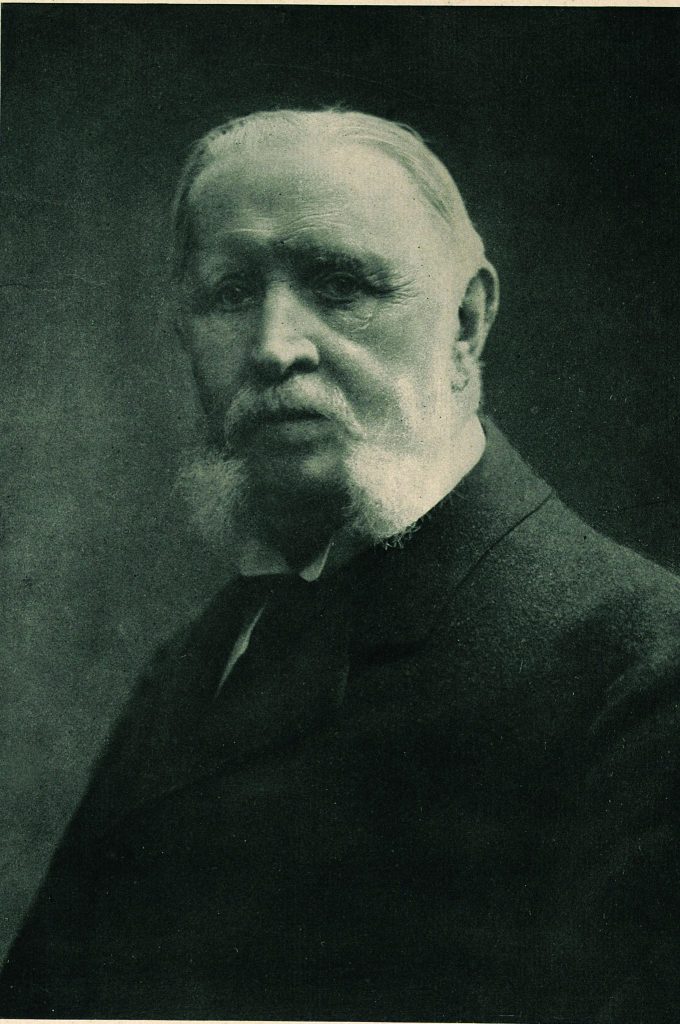
Eugen Protzen (1842–1920) Son of the company’s founder and co-owner of the business, 1910
Photo credit: Otto Witte bpk/Staatsbibliothek zu Berlin, portrait collection
-
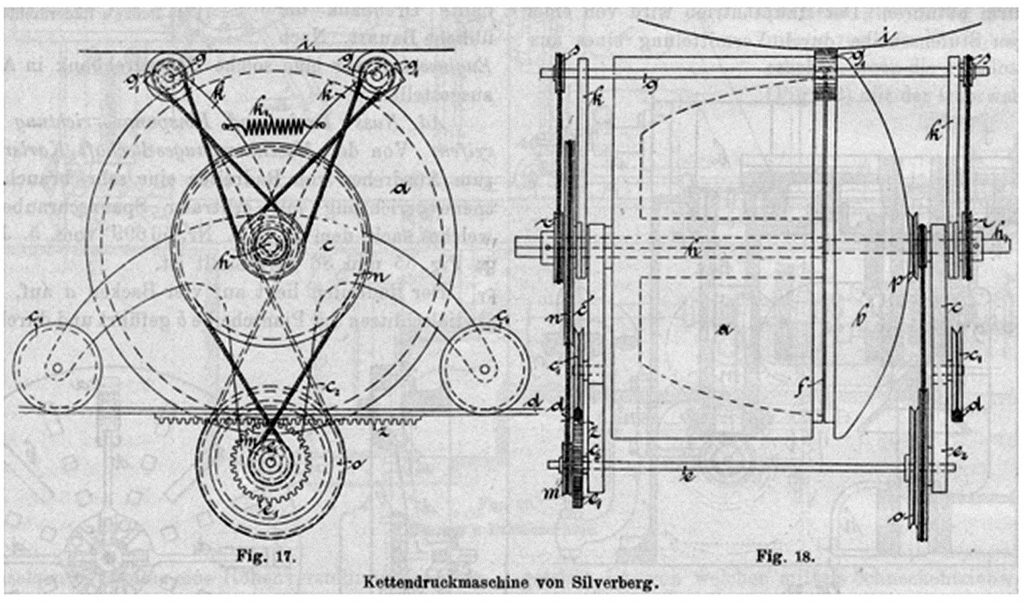
Plan einer Teppichdruckmaschine
Glafey 1896
-
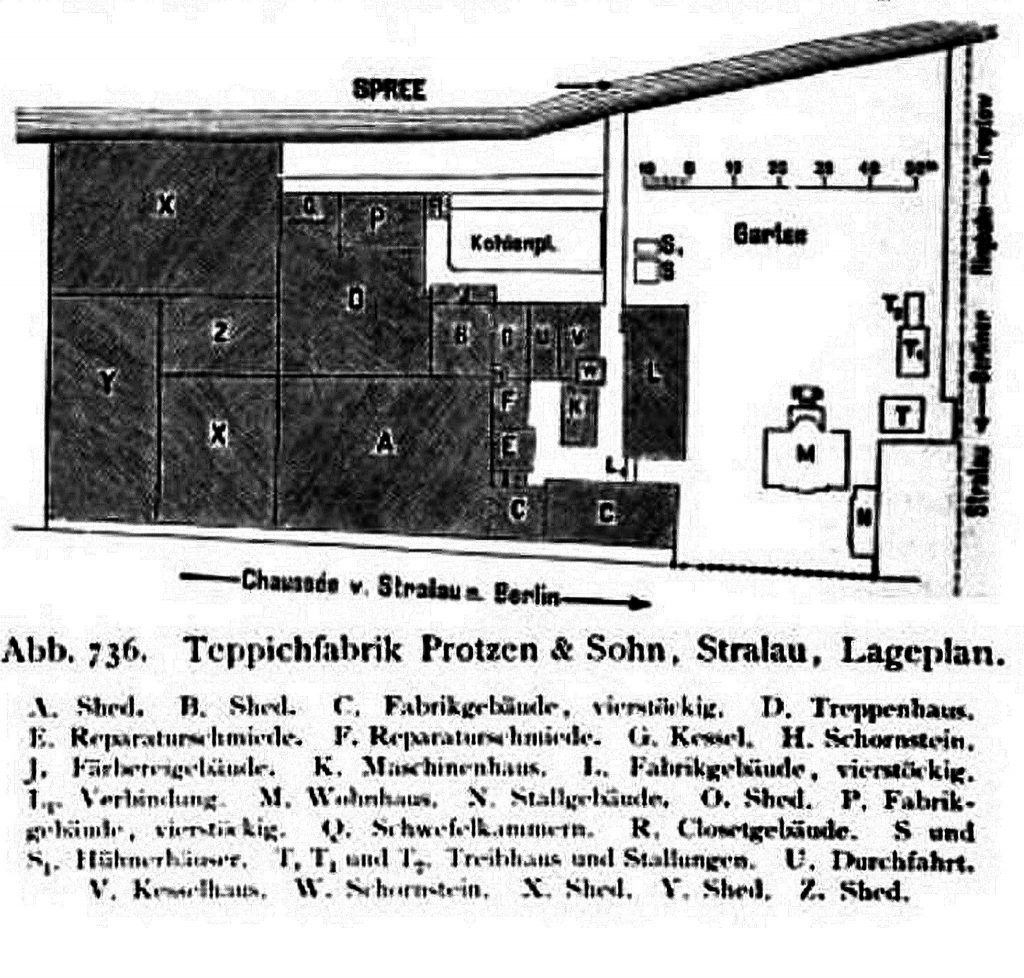
Layout of the carpet factory
Berlin und seine Bauten, 1896, vol 1, Ingenieurbauten, p. 620–621
-
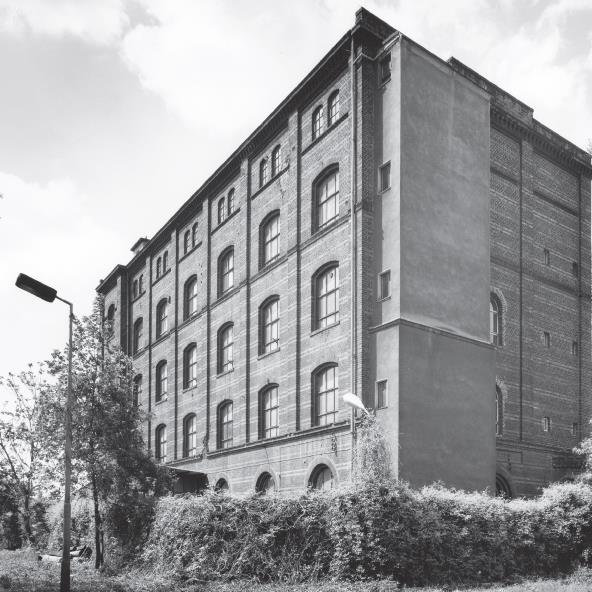
The carpet factory, 1994
Photo credit: Franziska Schmidt Landesdenkmalamt Berlin
-
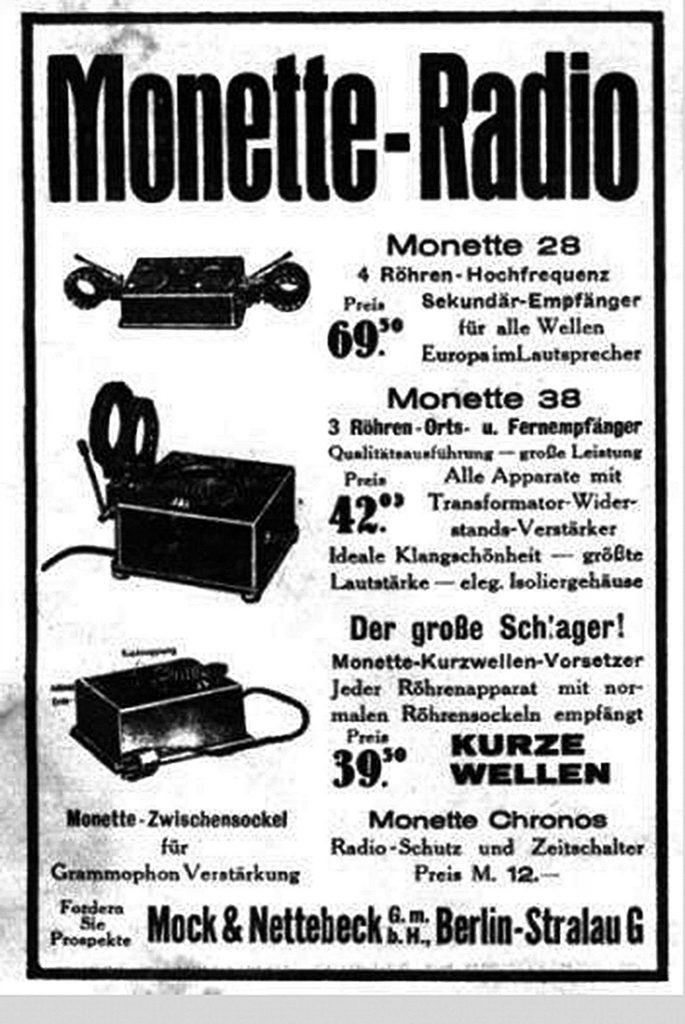
Advertisement from the Mock & Nettebeck company, which produced radios in the carpet factory building during the late 1920s
Source unknown